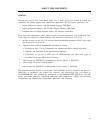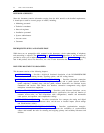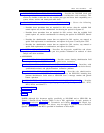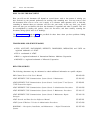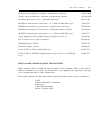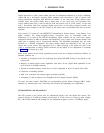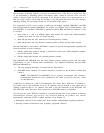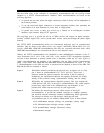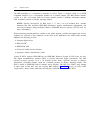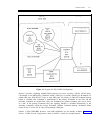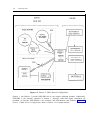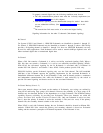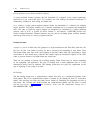
INTRODUCTION
1-3
The term ISDN refers to the collection of international recommendations that are evolving toward
adoption as a CCITT telecommunications standard. These recommendations are based on the
following objectives:
1.
2.
3.
To provide the user with end-to-end digital connectivity (which in theory will be independent of
the network provider)
To use the end-to-end digital connections as shared (integrated) facilities, thus permitting the
same channel to be used alternately for voice, data, or imagery/video
To permit users access to these new services by a limited set of multipurpose customer
interfaces (each interface being CCITT approved)
The long-range goal is to provide the full set of ISDN services and features on digital customer-
premises switches, digital COs, and to provide these services end-to-end through the public digital
network.
The CCITT ISDN recommendations define two (functionally different) types of communication
interfaces. They are known as the ISDN primary rate interface (ISDN-PRI) and the ISDN basic rate
interface (ISDN-BRI). ISDN-PRI recommendations (like DS1) are associated with trunk access, while
ISDN-BRI recommendations are associated with line (or user terminal) access.
Initially, the CCITT recommendations were identified by their standardization committee as the “I”
series documents (I.412, I.431, I.441, and I.451). Later, another CCITT development committee
used the I-series documents to develop another series of documents called the "Q" series (Q.921 or
Q.931). Recommendations are designed to be compatible with the Open Systems Interconnection
(OSI) 7-layer model. Both ISDN-PRI and ISDN-BRI include recommendations for layers 1, 2, and
3. Recommendations for the PRI are similar in function but not identical to those for the BRI. The
BRI and the PRI are compared as follows.
Layer 1 PRI defines functions provided by the physical layer. It requires use of a DS1
and is based on recommendations I.211, I.412, and I.431. These layer 1
functions include the physical connector, the creation of the bit stream by
multiplexing the information B-channels and signaling D-channel, the orderly
sharing of the D-channel, timing, synchronization, framing, and line coding.
Layer 2
Layer 3
PRI defines the signaling-channel (data-link) protocol. This layer includes the
LAPD protocol (the focus of the Q.921 recommendations). The LAPD protocol
permits many logical links to be multiplexed into one D-channel. It also
provides flow control and error recovery for each logical link.
PRI defines the network-layer protocol, which consists of the Q.931
recommendations. It provides the methods (messages) to establish, maintain,
and terminate network connections between communicating ISDN applications.
The message set includes over 200 messages, which provide many
services/features that are not available without ISDN. Some of these include:
●
●
●
●
Call establishment messages (alerting, call proceeding, connect, setup)
Call information phase messages (resume, suspend)
Call disestablishment messages (disconnect, release)
Miscellaneous messages



